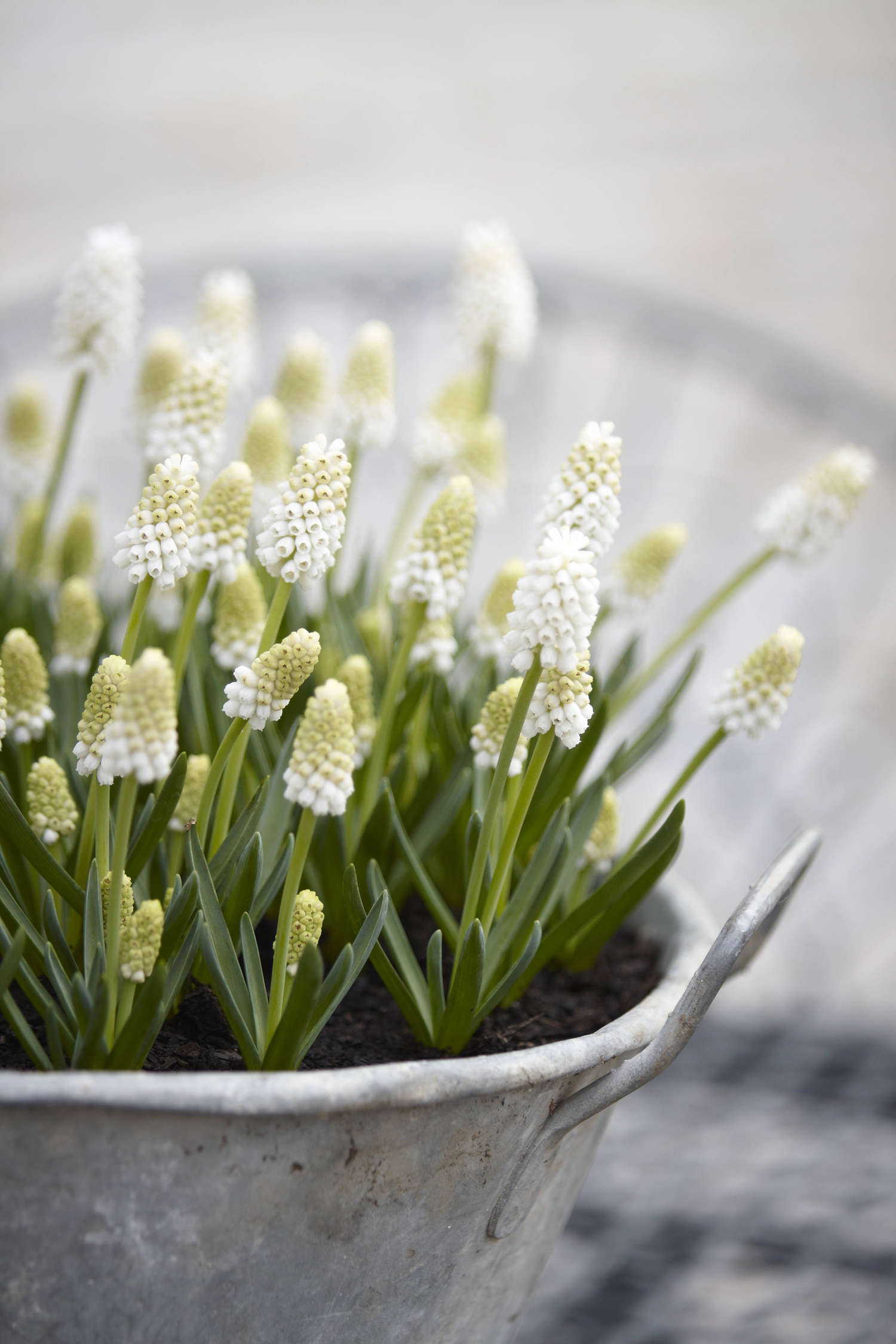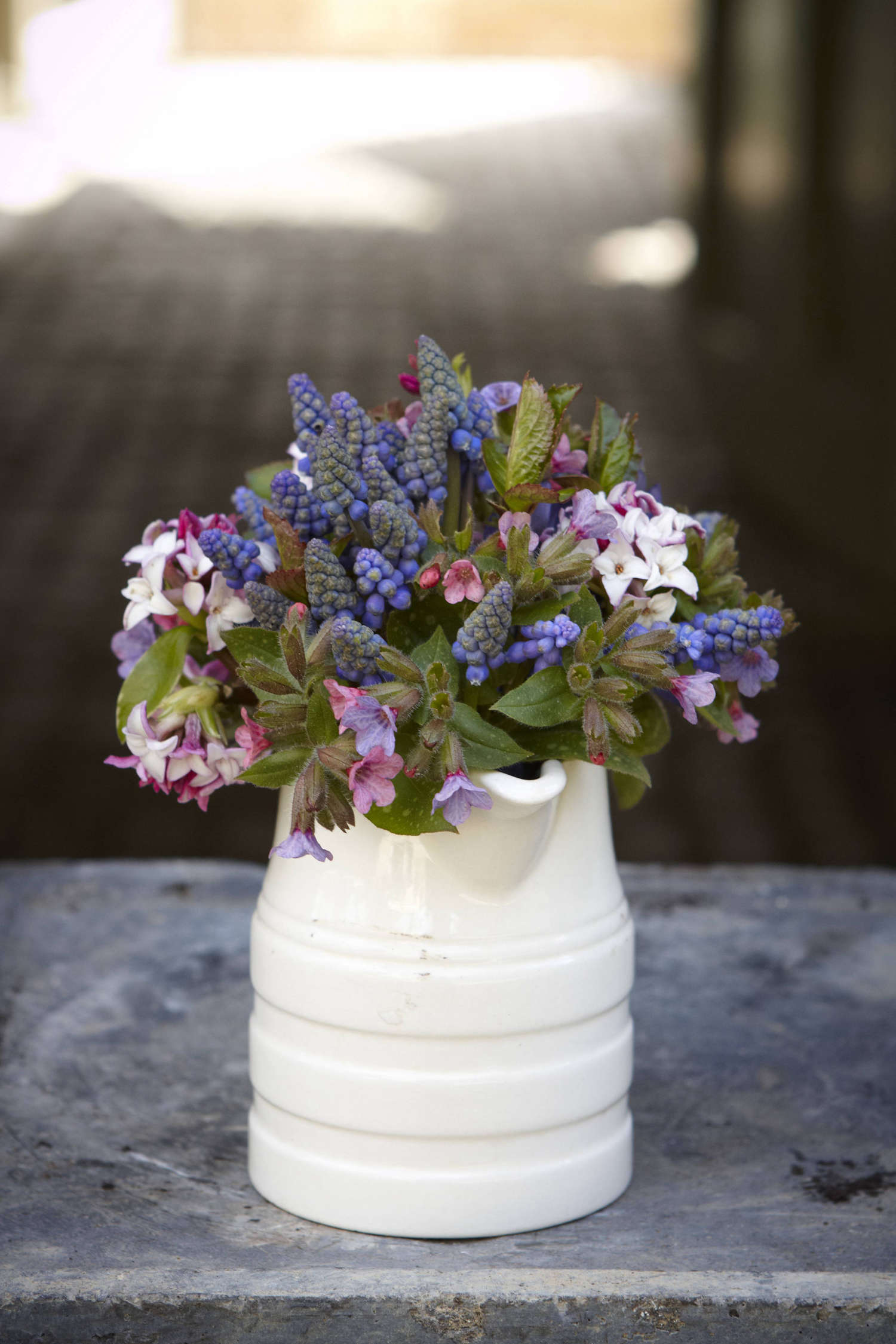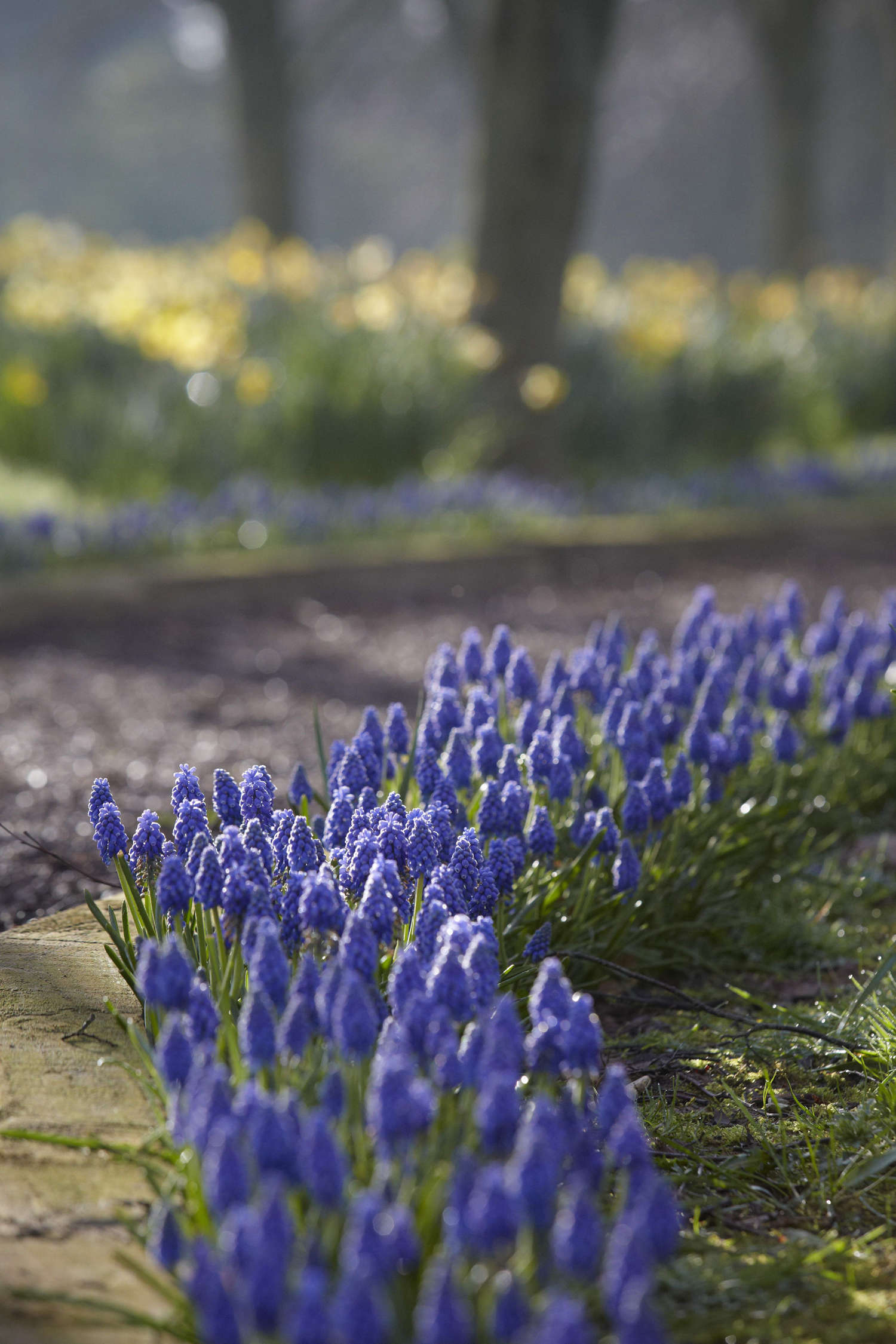Grape Hyacinth, Muscari: “Needs a Firm Hand”
With a striking resemblance to budding hyacinths—in miniature—grape hyacinths need to be carefully placed in the garden. In a flower bed they are spreading and dominant, with free-flowing grassy leaves. For more blue than green, they need rough conditions, ideally grown within a deliberate framework.
Photography by Britt Willoughby Dyer.
Above: Grape hyacinths are not hyacinths at all but wild flowers that originate from the rocky terrain of southern Europe and Asia. They respond well to artifice, as seen in this implausibly neat pathway, or grown indoors in tiny pots with scant soil. On the other hand, Muscari happily multiplies when loosely strewn around dappled woodland, though it gets lost among larger bulbs.
Above: The individual flowers of Muscari are shaped like urns or flagons and are worth appreciating close-up when brought indoors. They are determined to multiply and even when bulbs are forgotten in piles or left in pots after being forced (speaking from experience), they get on with the business of flowering and spreading as soon as they are given the chance.
Above: The more ornamental varieties of grape hyacinth are perfectly formed with well-behaved leaves. Muscari aucheri ‘White Magic’ is a favorite with flower arrangers, seen here in a galvanized tub belonging to Bayntun Flowers in Wiltshire.
Cheat Sheet
- The intense electric blue of most grape hyacinths is a good foil to other low growers like primrose, or the bulbs of small daffodils such as Narcissus ‘Tête-à-Tête’.
- It is worth seeking out good varieties, such as tufty Muscari latifolium. More recognizable in shape, M. armeniacum ‘Valerie Finnis’ is a calm pale blue.
- Muscari are ideal for forcing indoors, in tightly packed small groups. Their bulbs should stand proud of the soil.
Keep It Alive
- Aim for a carpet of blue instead of a mass of tangled green leaves, the result of soil that is too rich.
- Dappled shade under light-canopied trees is ideal, in grass that is allowed to grow long after flowering.
- With their blade-like foliage, grape hyacinths hide themselves in the rougher areas of a lawn for most of the year. Make sure they can be seen clearly in spring by mowing the lawn the previous autumn.
Above: An early spring posy from Bayntun Flowers, brightened by the small blooms and short stems of Pulmonaria and Daphne.
Above: Some types of Muscari have recently broken away, to become Pseudomuscari and Leopoldia. The enthrallingly decorative “tassel hyacinth,” formerly known as M. comosum is now properly classed as Leopoldia comosa.
N.B.: For more flowering bulbs, see Bulbs & Tubers 101: A Field Guide to Planting, Care & Design.
- Some of our favorites include Tulips 101 and Crocuses 101.
- And don’t miss Meredith’s post on Foolproof Spring Bulbs for a Beginner.

















Have a Question or Comment About This Post?
Join the conversation (1)